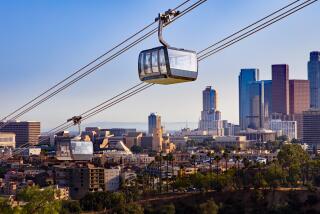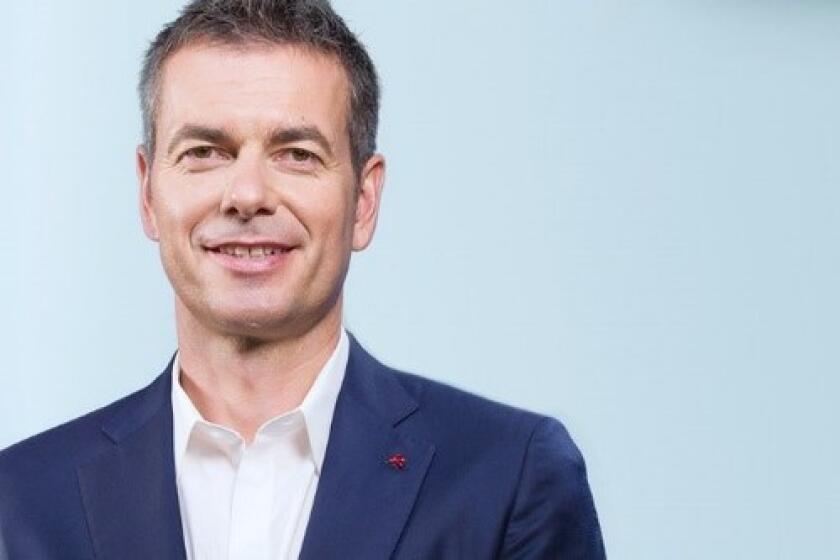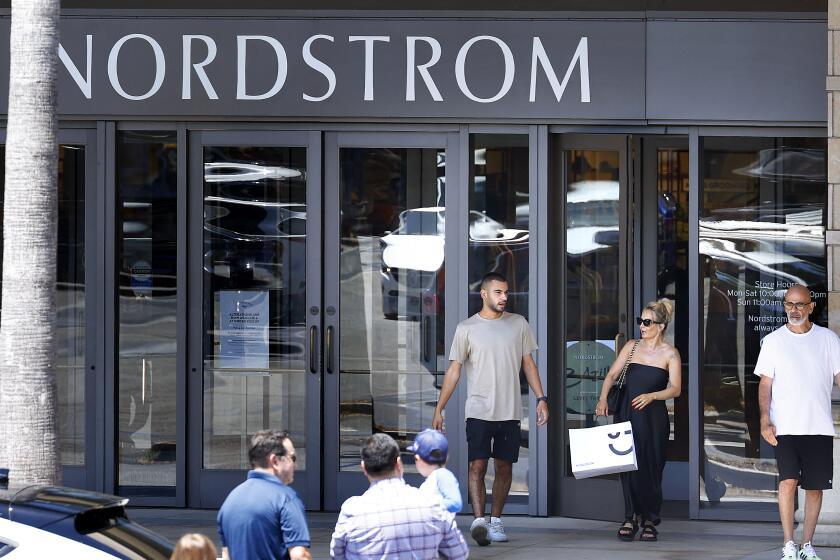High Court Raises Bar for Safety of Thrill Rides
- Share via
SAN FRANCISCO — In a decision that could force amusement parks to redesign or remove some thrill rides, the California Supreme Court ruled Thursday that operators of roller coasters and similar attractions have the same duty to ensure safety as those who run buses, trains and other means of public transportation.
The 4-3 decision, which found that thrill rides could be classified as “common carriers,” said operators must use “the utmost care and diligence” for the safety of riders rather than mere “reasonable care.” Most states require operators of amusement rides to use only “reasonable care,” industry lawyers said.
Although no one is predicting immediate shutdown of favorite rides, officials of California theme parks said Thursday they might have to change their operations, although they didn’t yet know how. Park officials insist they already adhere to the highest safety standards.
The ruling is expected to make it easier for people injured on rides to prevail in lawsuits against amusement parks.
About 20 million people visit amusement parks in California each year, generating $20 billion annually for the state’s economy, according to the industry.
In Southern California last year, 350 accidents at amusement parks were reported to the state, but none resulted in serious injury or death. The last fatality occurred in 2003, when a 22-year-old man was killed by the derailment of the Big Thunder Mountain Railroad roller coaster at Disneyland. The state blamed the accident on faulty maintenance.
Thursday’s ruling came a few days after a 4-year-old visitor to Walt Disney World in Florida died after being on a popular ride that subjects the body to strong acceleration forces. The cause of death is still being sought.
In ruling against theme park operators, the California Supreme Court said riders are entitled to safety on thrill rides just as they are on trains and buses.
“Riders of roller coasters and other ‘thrill’ rides seek the illusion of danger while being assured of their actual safety,” Justice Carlos R. Moreno wrote for the majority. “The rider expects to be surprised and perhaps even frightened, but not hurt.”
Theme park industry leaders said the ruling could mean the demise of thrill rides.
“Under an extreme interpretation, it would take the thrill out of thrill rides,” said John Robinson, head of the California Attractions and Parks Assn., a state industry advocacy group. “It puts roller coasters out of business.”
But attorney Barry B. Novack, representing the family of a woman whose death after taking a Disneyland ride was the subject of the high court’s ruling, said the decision would simply make rides safer.
Theme parks could reduce the threat of lawsuits by posting more explicit warning signs and designing better harnesses, he said.
“We are not going to see this mass exodus of theme park operators,” Novack said. “But the people involved in designing, operating and maintaining those rides are going to have to take a good, hard look at their data and take appropriate steps ... to remedy and rectify any problems.”
The three justices who dissented from the decision predicted it would result in “mischief and absurdity” and a rise in lawsuits.
“Even the operators of a mechanical bull would appear [to be covered by the ruling] inasmuch as this device physically moves the rider up and down, and side to side,” Justice Ming W. Chin wrote for the dissenters.
Thursday’s decision came in the lawsuit filed by the family of Cristina Moreno, 23, a tourist from Spain who died on her honeymoon in 2000 after the Indiana Jones Adventure ride at Disneyland. Her family contends she died from bleeding of the brain caused by the shaking and stresses of the ride.
A trial court ruled that the Disney attraction could not be considered “a common carrier” required to meet the standards of care imposed on ordinary means of public transportation. A state Court of Appeal disagreed, and Disney appealed to the state’s highest court.
In upholding the appellate court decision, the state Supreme Court said it didn’t matter whether the purpose of a common carrier was transportation or entertainment.
“Certainly there is no justification for imposing a lesser duty of care on the operators of roller coasters simply because the primary purpose of the transportation provided is entertainment,” wrote Justice Moreno, who is no relation to the plaintiffs.
In advance of the Supreme Court ruling, the amusement park industry had predicted that classifying thrill rides as carriers akin to buses would force parks to raise ticket prices and make thrill rides less thrilling, or close them altogether. They said that riders could be forced to wear protective headgear or body armor and that rides might have to be altered to reduce their speed or acceleration.
The industry reaction Thursday was more subdued, with officials saying the ultimate impact on park operations would not be fully known until the ruling was studied more carefully.
“We need to figure out whether this is going to change the fundamental nature of amusement parks or increase the litigation costs,” said Robinson, head of the California industry group.
He said transportation systems such as trains were fundamentally different from amusement park rides.
“When you get off a roller coaster ride, you hair is standing on end, your adrenaline is surging and your knees are weak,” he said. “That’s certainly not what you want when you step off of an airplane or a bus.”
Thursday’s ruling did not specify which rides would have to meet the higher duty of care. The decision said it would apply only to “a roller coaster or similar amusement park ride.”
“We’re not talking about Small World,” Novack said, referring to a young children’s ride at Disneyland. “We’re not talking about Dumbo. We’re talking about the more aggressive, dynamic rides. On Indiana Jones, from past reportings, there have been prior incidents on that ride involving people who have suffered brain bleeds.”
Disneyland spokesman Rob Doughty expressed disappointment with the ruling.
“While we disagree with the decision, it has nothing to do with the safety of our parks,” he said. “Our commitment to guest safety always has been, and continues to be, unwavering.”
Susan Tierney, a spokeswoman for Knott’s Berry Farm in Buena Park, said park officials were not yet certain what the ruling might require “in terms of restrictions and responsibilities.”
“Our feeling is that we already take the utmost care,” she said. “If we weren’t safe, we wouldn’t have guests. We wouldn’t be in business.”
Attorney R. Wayne Pierce, who represented several major industry groups in the case, said the ruling was merely “theoretical” because it involved a pretrial motion. He said the impact would not be known until several cases have gone to trial.
“It’s full employment for lawyers,” Pierce said.
Dolan reported from San Francisco, Yoshino from Orange County.
More to Read
Inside the business of entertainment
The Wide Shot brings you news, analysis and insights on everything from streaming wars to production — and what it all means for the future.
You may occasionally receive promotional content from the Los Angeles Times.












